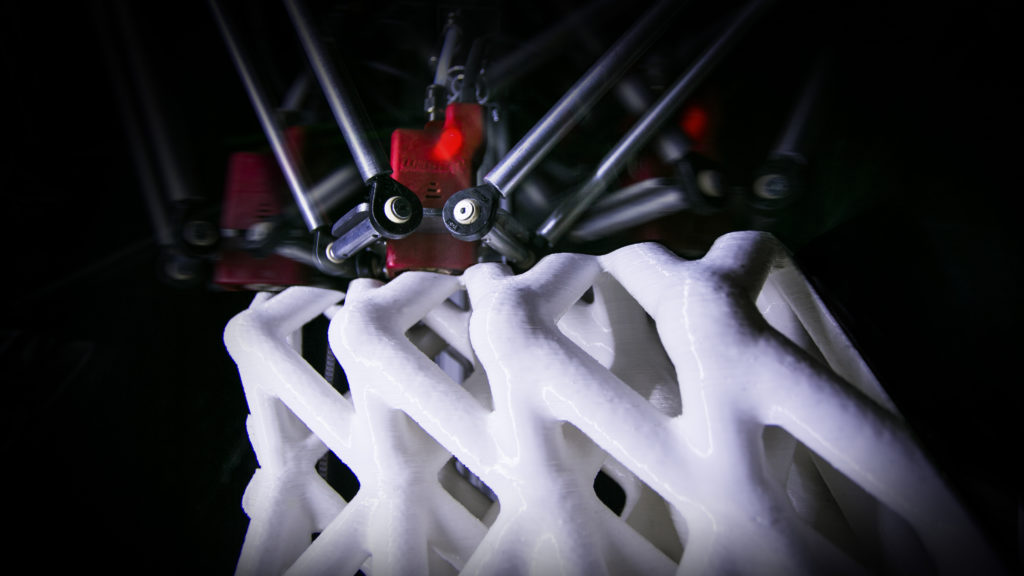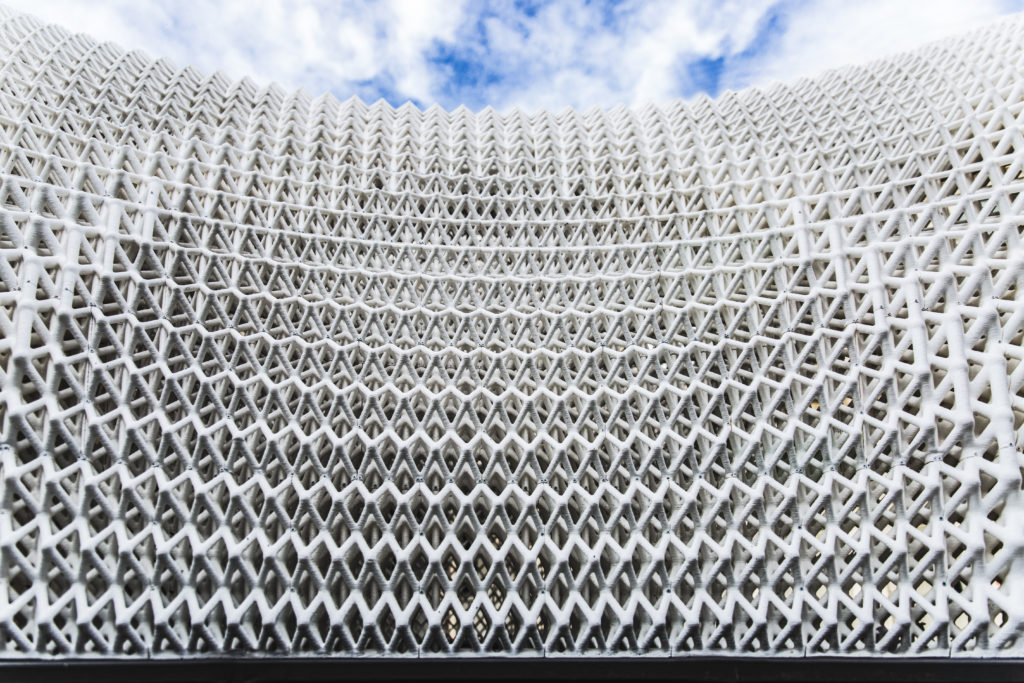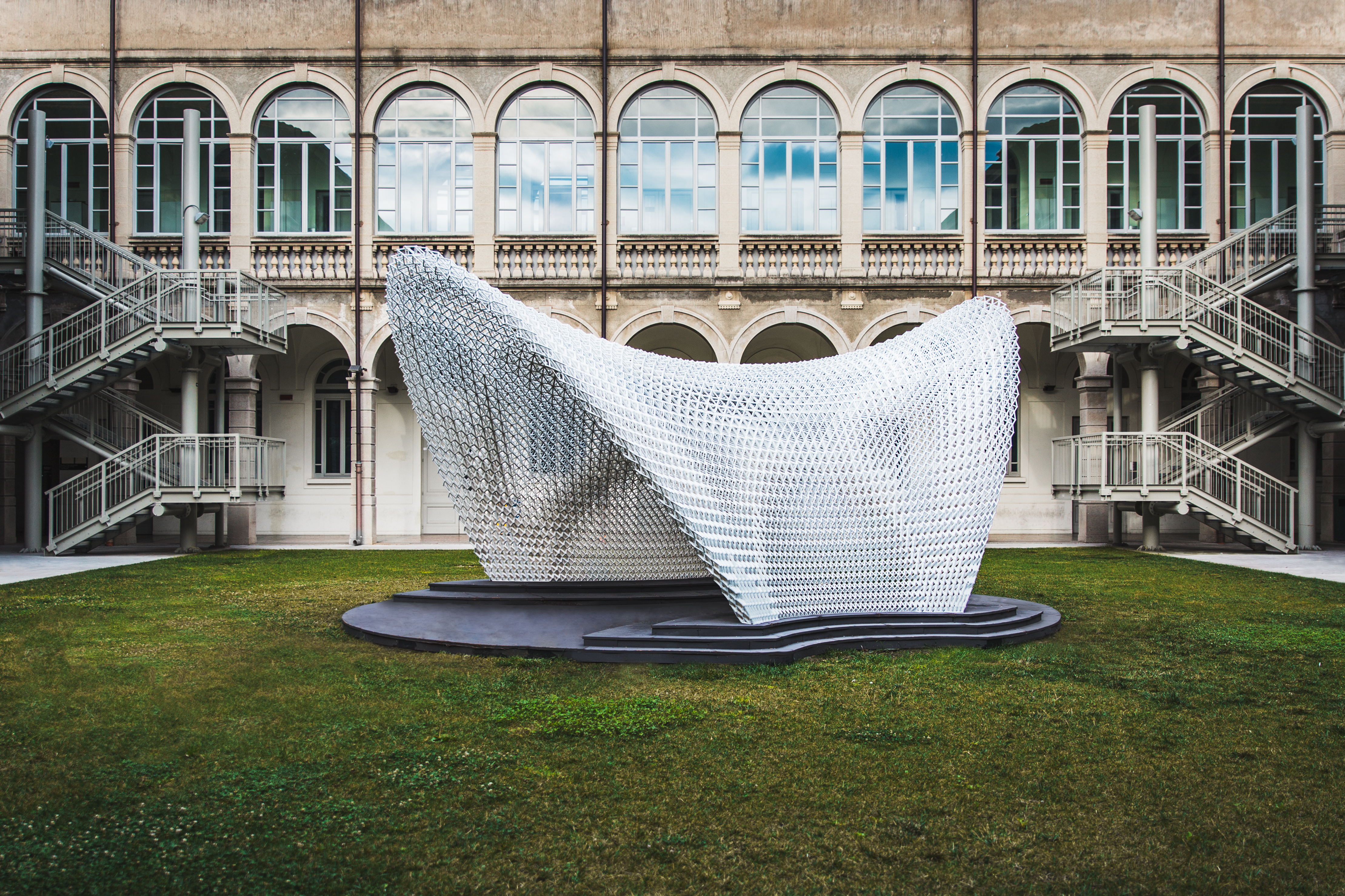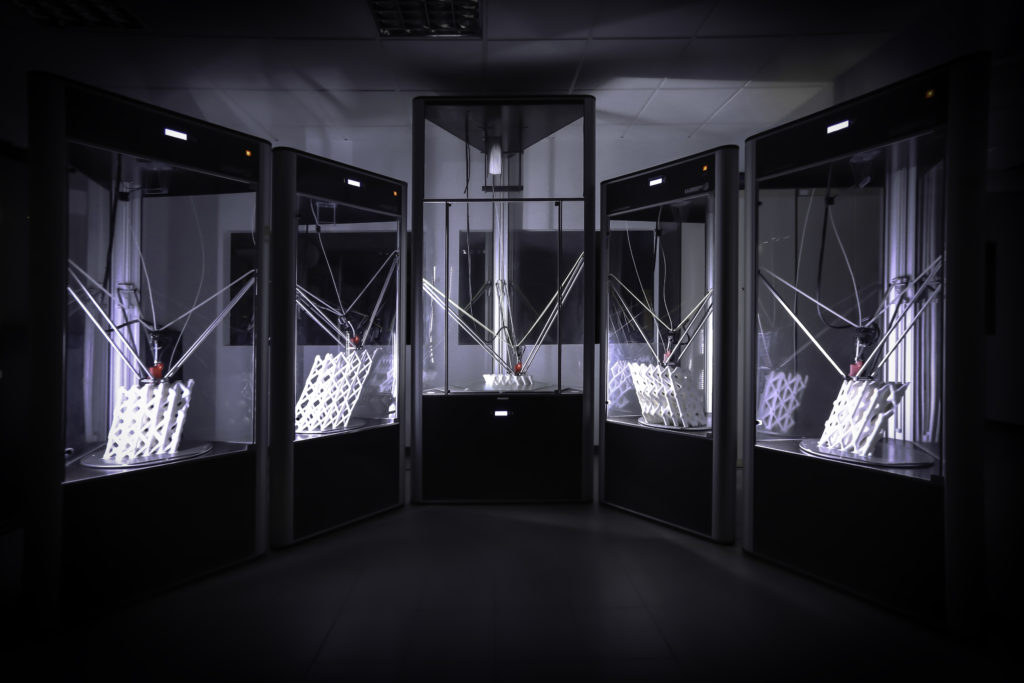Trabeculae Pavilion is a recently finished 3D printed architecture. Achieved by WASP, the structure was made possible thanks to the synergy of design, material and manufacturing technologies.
The fabrication of the architectural work requires the use of five 3D printers, four DeltaWASP 4070 and a DeltaWASP 60100 that worked H24. Engineers also use a WASP Spitfire extruder that enabled to form stiff components within a minimized amount of time.
Why 3D Printing?
During the development process of this project, engineers realized there was a lack of materials. Furthermore, one thing we do not often mention is that, every project starts with computational design. Therefore, they created this design from “a computational process that finds inspiration in Nature, specifically in the materialization logics of the trabeculae, the internal cells that form the bone microstructure. From this investigation, custom algorithms have been developed to support the creation of a cellular load-responsive structure with continuous variations in sizing, topology, orientation and section, in order to maximize material efficiency.”
The built pavilion is made up of 352 components that cover a total area of 36 square meters, shaped additively by a 112 kilometers-long extrusion of a high-resistance biopolymer, specifically developed with industrial partner FILOALFA® in order to give consistency to Fused Deposition Modelling (FDM).

An effective material distribution during the manufacturing process led to a resistant and lightweight structure with a variable weight to area ratio of 6 to 10 kg/m2.
According to the company, this would be “ten times lighter than typical construction techniques with comparable mechanical performance.”
Beyond its technical features, the pavilion is an outstanding expression of a tectonic system which enables multiple high-res optimization logics with the precision of a tenth of a millimeter.

WASP has until now proven that its 3D printing technologies might fit a variety of projects form art, medical to construction.
For further information about 3D Printing, follow us on our social networks and subscribe to our newsletter! Would you like to subscribe to 3D Adept Mag? Would you like to be featured in the next issue of our digital magazine? Send us an email at contact@3dadept.com







